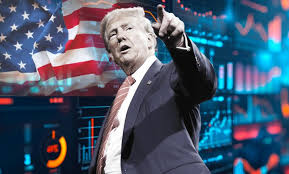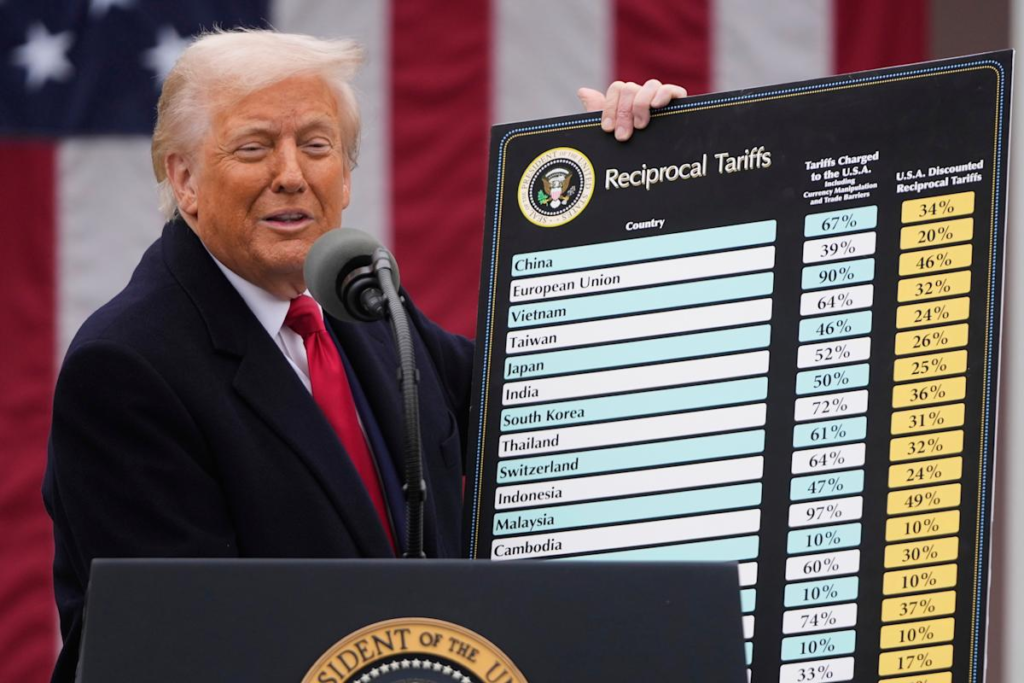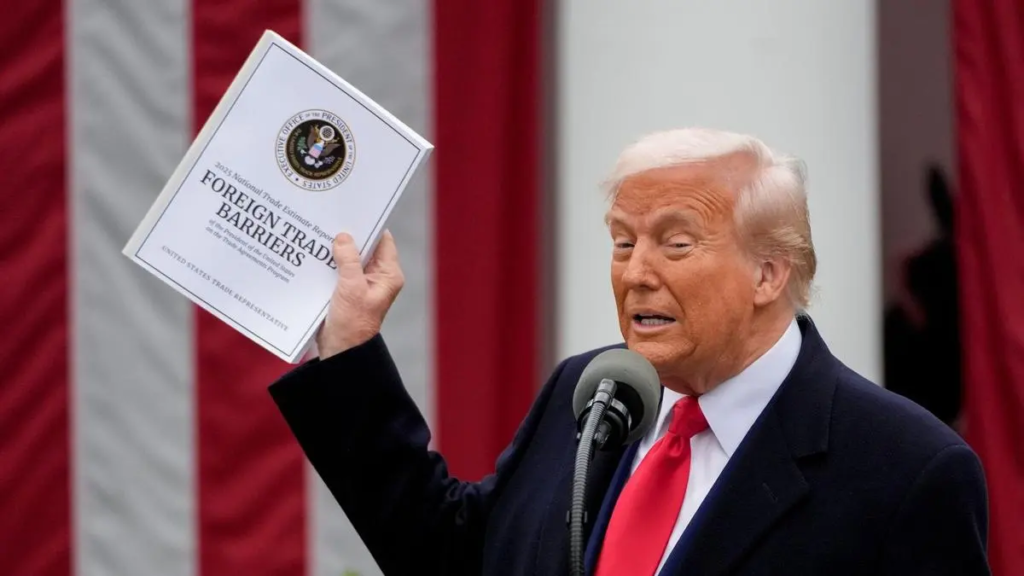In a bold move that has sparked widespread discussion, President Donald Trump recently called out Walmart, the nation’s largest retailer, to “eat the tariffs” and avoid passing on increased costs to consumers. This statement comes as Japan intensifies efforts to eliminate the 25% tariffs imposed on its car exports to the United States, a development that could have significant ripple effects for American consumers. These events highlight the complex interplay of global trade policies, retail pricing, and consumer affordability, leaving many wondering how these changes will shape the economy in the coming months.

Trump’s Message to Walmart: Keep Prices Low
On May 17, 2025, President Trump took to his social media platform, Truth Social, to address Walmart’s announcement that it would likely raise prices due to the financial strain of new tariffs. “Walmart should STOP trying to blame Tariffs as the reason for raising prices throughout the chain,” Trump wrote. “Walmart made BILLIONS OF DOLLARS last year, far more than expected. Between Walmart and China, they should, as is said, ‘EAT THE TARIFFS,’ and not charge valued customers ANYTHING. I’ll be watching, and so will your customers!!!”
Walmart, which serves over 150 million customers weekly across its 4,600 U.S. stores and online platform, has been a cornerstone of affordable shopping for American households. However, the retailer’s CEO, Doug McMillon, warned during a recent earnings call that the company could not fully absorb the costs of Trump’s tariffs, even after the administration reduced tariffs on Chinese goods from 145% to 30% for a 90-day period. McMillon noted that tariffs on imports from countries like Costa Rica, Peru, and Colombia are driving up costs for everyday items such as bananas, avocados, and coffee. Additionally, high tariffs on Chinese goods, particularly electronics and toys, pose a significant challenge.
Walmart’s chief financial officer, John David Rainey, echoed these concerns, stating that price increases could begin by the end of May, with more substantial hikes expected in June. “We’re wired for everyday low prices, but the magnitude of these increases is more than any retailer can absorb,” Rainey said. For example, he estimated that a $350 car seat made in China could soon cost an additional $100, a 29% increase.
In response, Treasury Secretary Scott Bessent attempted to downplay the situation, suggesting that Walmart’s warnings were a “worst-case scenario” required by regulatory obligations during earnings calls. Bessent claimed that Walmart would absorb some of the tariff costs, though he acknowledged that some expenses might still be passed on to consumers. This back-and-forth has left shoppers anxious about potential price hikes on essentials, from groceries to school supplies.

Japan’s Push to Remove 25% Car Tariffs
While Trump pressures retailers like Walmart to shield consumers from tariff-related costs, Japan is taking a different approach by advocating for the complete removal of the 25% tariffs on its car exports to the U.S. These tariffs, implemented in March 2025 under the Trump administration’s efforts to bolster domestic manufacturing, have significantly impacted Japanese automakers like Toyota and Honda, which rely heavily on the U.S. market.
Japanese Prime Minister Shigeru Ishiba described the tariffs as a “national crisis,” noting that they have contributed to a plunge in Tokyo’s stock market and heightened economic uncertainty. Japan’s government is now pushing for a full exemption from the tariffs, unwilling to settle for partial concessions. This stance reflects Tokyo’s desire to avoid domestic backlash and secure favorable trade terms with the U.S., one of its top trading partners.
The 25% tariffs apply to passenger vehicles, including sedans, SUVs, and light trucks, as well as key auto parts like engines and transmissions. For American consumers, these tariffs have already driven up car prices, with analysts estimating an average increase of $3,000 to $4,000 per vehicle. Imports from Japan, South Korea, and Europe could see even steeper hikes, potentially adding up to $9,375 to the cost of some models. For example, a Hyundai Venue, a subcompact SUV with a current list price of $24,000, could rise to $28,500 under the tariffs, making affordable vehicles less accessible.
The tariffs have also raised concerns about broader economic impacts. Higher car prices could exacerbate inflation, while increased costs for auto parts may lead to higher repair bills and insurance premiums. According to Insurify, average car insurance premiums could rise by 19% to $2,759 annually due to the tariffs. These changes are particularly troubling for budget-conscious consumers already grappling with rising costs in other areas, such as groceries and housing.
What This Means for U.S. Consumers

The convergence of Trump’s tariff policies and Japan’s push for exemptions creates a challenging landscape for American consumers. On one hand, Trump’s call for Walmart to absorb tariff costs aims to protect shoppers from immediate price increases. However, economists and retail experts argue that retailers like Walmart, which operate on razor-thin margins, may have little choice but to pass on some costs. Ryan Sweet, chief U.S. economist at Oxford Economics, noted that businesses must choose between raising prices or laying off workers, describing the tariffs as “the iceberg that we knew we were going to hit.”
For example, tariffs on imports from Mexico and Canada, set at 25%, are expected to cost the average U.S. household $435 and $309 annually, respectively. Tariffs on Chinese goods, even at the reduced 30% rate, will add an estimated $329 per household. These costs affect a wide range of products, from avocados and tomatoes to electronics and toys, making it harder for families to stretch their budgets.
On the automotive front, Japan’s efforts to remove the 25% car tariffs could provide relief for consumers if successful. Lowering or eliminating these tariffs would reduce the cost of imported vehicles, potentially stabilizing prices for popular models from brands like Toyota, Honda, and Nissan. However, the outcome remains uncertain, as Trump has emphasized that tariffs are a key revenue source and a tool to encourage domestic manufacturing.
The Bigger Picture: Trade, Jobs, and Inflation
Trump’s tariff strategy is rooted in his goal to revitalize U.S. manufacturing and create domestic jobs. He argues that tariffs incentivize companies to produce goods in the U.S., trải nghiệm reliance on foreign imports. For instance, the White House has claimed that the auto tariffs will strengthen the U.S. automotive sector, which has seen domestic production stagnate in recent decades. In 2024, only 25% of the content in cars sold in the U.S. was made domestically, compared to 97% in 1985.
However, critics warn that tariffs could backfire, reigniting inflation and increasing the risk of a recession. The Tax Foundation estimates that the tariffs will act as a $1,200 tax increase per U.S. household in 2025, disproportionately affecting lower-income families. Additionally, retaliatory tariffs from trading partners like Canada, China, and the European Union could harm U.S. exporters, further complicating the economic outlook.
Looking Ahead
As the U.S. navigates this turbulent trade landscape, consumers are left to wonder how much more they’ll have to pay for everyday goods and vehicles. Walmart’s ability to absorb tariff costs will depend on its negotiations with suppliers and its willingness to sacrifice profit margins. Meanwhile, Japan’s push to eliminate car tariffs could ease pressure on the auto market, but only if the Trump administration agrees to concessions.
For now, American shoppers are bracing for impact. Some are rushing to buy cars or stock up on goods before prices climb further, while others are hoping for trade deals that could soften the blow. As Trump continues to shape U.S. trade policy, the balance between protecting domestic industries and keeping costs low for consumers remains a delicate one.
Must Read :- Jayden Daniels Shines as a Potential Star for 2028 Olympic Flag Football





